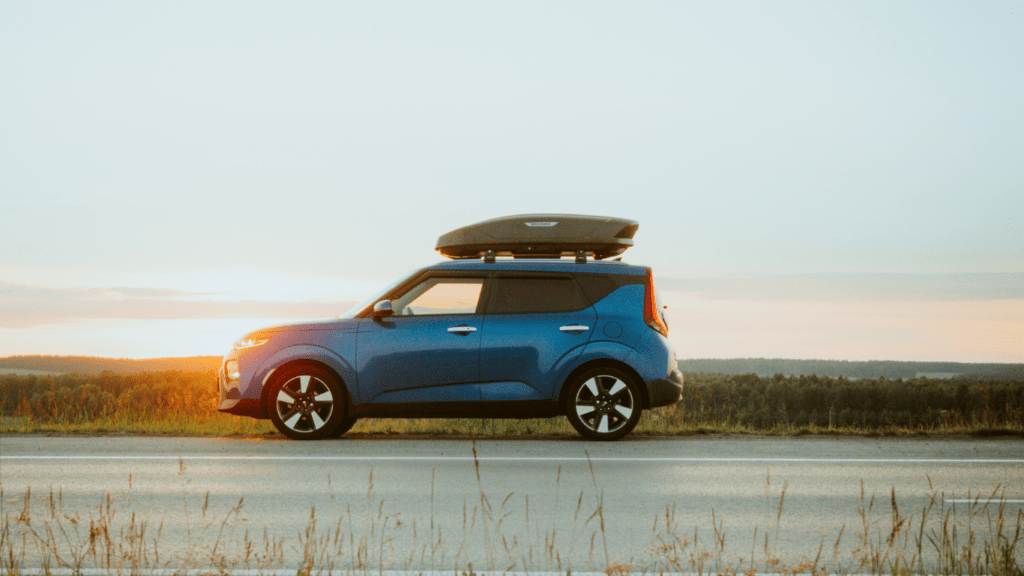Understanding Car Roof Racks and Carriers
Car roof racks and carriers enhance travel capabilities by offering extra storage. Their utility spans various activities, from carrying bikes to transporting kayaks.
Types of Roof Racks
Roof racks fall into several categories, each suited to different needs.
- Crossbars: These mount across the roof of the car and can support various carriers and gear.
- Factory Bars: Built into the vehicle, they offer compatibility with additional attachable components.
- Raised Rails: These are typically found on SUVs and wagons, providing a versatile base for crossbars or baskets.
- Rain Gutters: Common in older cars, these use the car’s gutters for mounting.
- Track Systems: Slide tracks affixed directly to the roof, offering flexibility in positioning crossbars.
Types of Carriers
Carriers complement roof racks by securely holding different items.
- Cargo Boxes: Enclosed, hard-shell boxes ideal for protecting luggage from the elements.
- Cargo Baskets: Open, mesh baskets versatile enough for bulky gear.
- Bike Racks: Designed to hold bikes, these can be mounted on crossbars or hitch receivers.
- Kayak Carriers: Cradles or J-hooks specifically for transporting kayaks.
- Ski and Snowboard Racks: These hold skis or snowboards securely on the roof, often with locking mechanisms.
Understanding these tools helps in selecting the most suitable configuration for any travel plan.
How to Choose the Right Car Roof Rack
Choosing the right car roof rack involves several key considerations. A suitable roof rack maximizes space without compromising safety or ease of use.
Factors to Consider
Several factors impact the choice of a car roof rack:
- Purpose: Intended use aids in selecting the correct type. Transporting bikes, kayaks, or cargo requires specific racks like bike racks, kayak carriers, or cargo baskets, respectively.
- Weight Capacity: Each roof rack has a maximum weight limit. Verify this limit aligns with the weight of items you’ll transport.
- Aerodynamics: Consider aerodynamics as they affect fuel efficiency and noise levels. Low-profile racks reduce drag and improve fuel savings.
- Installation Ease: Check if the roof rack requires tools for installation or comes pre-assembled. Simple installations save time and potential frustration.
- Security Features: Look for racks with robust locking mechanisms to prevent theft during trips.
Compatibility with Your Vehicle
Vehicle compatibility is crucial when selecting a roof rack:
- Roof Type: Different racks suit various roof types. Crossbars work with bare roofs or factory bars, while track systems fit vehicles with pre-installed tracks.
- Vehicle Dimensions: Ensure the rack’s width and length fit your vehicle’s dimensions. Measurement guidelines are usually provided by manufacturers.
- Attachment Points: Check your vehicle for existing attachment points. Raised rails and rain gutters determine the best fit for specific rack types.
- Manufacturer Recommendations: Always consult your vehicle’s manual or manufacturer recommendations to ensure the chosen rack won’t damage the roof’s integrity.
Choosing the right car roof rack enhances carrying capacity and ensures safety on the road.
Best Car Roof Racks Reviewed

I’ve reviewed various car roof racks to help you find the perfect fit for your vehicle and travel needs.
The Top Pick for Versatility
The Thule Motion XT stands out for its versatility. This cargo box offers 22 cubic feet of storage space, making it suitable for carrying skis, snowboards, camping gear, and more.
It’s designed with an aerodynamic shape to reduce wind resistance and noise. Its dual-side opening allows for easy access from either side of the vehicle, enhancing convenience.
The SlideLock system ensures secure locking, providing peace of mind. The Motion XT also features tool-free installation, making it easy to attach and remove.
Best Budget-Friendly Option
For those looking for a budget-friendly option, the Yakima LoadWarrior impresses with its affordability and functionality. This cargo basket offers ample space for gear storage, measuring 44 x 39 x 6.5 inches. The weather-resistant steel construction ensures durability even in harsh conditions.
The LoadWarrior is compatible with most crossbars, making installation straightforward. It also includes a wind fairing that helps reduce noise during travel. Optional accessories like the Yakima stretch net and locking bracket add security and versatility without breaking the bank.
Best Carriers for Specific Needs
Different travel scenarios demand specialized carriers. Here’s what I recommend for unique requirements:
Ideal for Heavy Loads
For those hauling heavy items, strength and capacity top the list. The Yakima SkyBox 21 Carbonite impresses with its 21 cubic feet storage space and 165-pound limit.
This carrier’s aerodynamic design reduces drag and noise, ensuring an efficient drive. Constructed from durable materials, it withstands harsh weather. Dual-side opening and a SuperLatch security system make loading/unloading easy while keeping your gear safe.
Great for Easy Accessibility
When access matters most, convenience can’t be compromised. The Thule SideKick Cargo Box offers quick access with its single-side opening feature, ideal for shorter and lighter items.
With 8 cubic feet of storage space and a 75-pound capacity, it’s perfect for camping gear or weekend trips. Easy to install, this lightweight box fits most roof racks and secures with a lockable latch, providing a hassle-free experience.
Care and Maintenance Tips
Maintaining car roof racks and carriers are key to longevity and performance. Follow these tips to ensure they stay in top condition.
Regular Maintenance
Inspect car roof racks and carriers often. Check for loose bolts, cracks, and signs of wear. Clean racks and carriers regularly, especially after trips. Use mild soap and water to remove dirt and road grime. Lubricate moving parts to prevent rust and ensure smooth operation.
Proper Installation and Use
Install roof racks and carriers correctly to avoid damage. Follow the manufacturer’s instructions for secure mounting. Overloading racks and carriers can lead to damage.
Adhere to weight limits specified by manufacturers. Balance loads evenly to prevent your car from handling poorly. Always double-check fastenings before trips to ensure safety.

